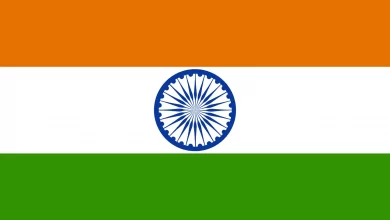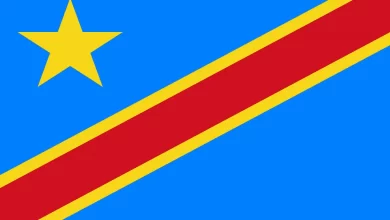Chile is a South American country that is located along the western coast of the continent. It has a long, narrow shape that extends over 4,300 kilometres from north to south, making it one of the world’s longest countries. The country is bordered by Peru to the north, Bolivia to the northeast, Argentina to the east, and the Pacific Ocean to the west. Chile is known for its diverse geography, which includes the Andes mountain range, the Atacama Desert, and numerous lakes, rivers, and forests. Santiago is the capital and largest city in Chile and is home to over 7 million people in the metropolitan area. Chile is a leading producer of copper and is known for its wine industry, producing some of the world’s finest wines. The country has a rich cultural heritage that blends indigenous traditions with Spanish colonial influences, and its people are known for their warm hospitality and passion for life. Chile has a stable economy and is a member of many international organizations, including the United Nations and the World Trade Organization.
- Chile is located on the western coast of South America and has a population of approximately 19 million people.
- The official name of Chile is the Republic of Chile, and it is a unitary presidential republic.
- The capital and largest city of Chile is Santiago, and Spanish is the primary as well as the official language of the nation.
- The current president of Chile is Gabriel Boric, and he took office on 11 March 2022.
- Chile is bordered by Peru to the north, Bolivia to the northeast, Argentina to the east, and the Pacific Ocean to the west and south.
- Chile is the longest country in the world, stretching over 4,300 kilometres from north to south.
- The Atacama Desert in northern Chile is one of the driest places on Earth.
- Chile is home to over 2,000 volcanoes, including 500 that are still active.
- Easter Island, a Chilean territory, is home to nearly 900 massive stone statues called Moai.
- The Andes mountain range runs the length of Chile and is home to some of the world’s highest peaks.
- The Chilean flag features two horizontal bands of white and red and a blue square with a white star in the upper left corner.
- Chile is known for its seafood, including salmon, mussels, and sea urchins.
- The Chilean national dance is the Cueca, which is typically performed during celebrations and festivals.
- The Chilean wine industry dates back to the 16th century when Spanish conquistadors brought vines to the region.
- Chile is the world’s fifth largest exporter of wine, with the majority of production occurring in the Central Valley region. Chilean wine output in 2022 was 1.244 billion litres, a 7.39 per cent decline from 2021.
- The Colchagua Valley is one of Chile’s most famous wine regions, known for producing Cabernet Sauvignon, Carmenere, and Syrah.
- The Torres del Paine National Park in southern Chile is a popular destination for hiking and outdoor activities.
- Chilean cuisine is heavily influenced by Spanish and indigenous traditions and includes dishes such as empanadas and pastel de choclo.
- The city of Valparaiso is known for its colourful houses and street art and has been designated a UNESCO World Heritage Site.
- Chile is home to a large number of glaciers, including the San Rafael Glacier, which is one of the largest in South America.
- The Chilean national anthem, “Himno Nacional de Chile,” was written in 1828.
- The Chilean flamingo is featured on the country’s coat of arms.
- Chile has a rich literary tradition, with writers such as Gabriela Mistral and Pablo Neruda gaining international acclaim.
- The Rapa Nui people, the indigenous inhabitants of Easter Island, have their own language and culture that is distinct from that of mainland Chile.
- The National Stadium in Santiago was used as a detention centre during the dictatorship of General Pinochet in the 1970s.
- Chile has a growing film industry, with several Chilean films receiving critical acclaim at international film festivals.
- The Tamarugal National Reserve in northern Chile is home to the largest number of cacti species in the world.
- Chile is home to the world’s largest swimming pool, located at the San Alfonso del Mar resort in Algarrobo.
- The country has a rich mining history, with copper being Chile’s primary export.
- The Chilean peso is one of the strongest currencies in Latin America.
- Chile is the only country in South America that does not share a border with Brazil.
- The famous poet Pablo Neruda had three homes in Chile that are now museums: La Chascona in Santiago, La Sebastiana in Valparaiso, and Isla Negra in the coastal town of El Quisco.
- Chile is known for its vibrant music scene, which includes traditional folk music, rock, and electronic music.
- The Magellan penguin, which is native to Chile, is named after the explorer Ferdinand Magellan.
- The Tierra del Fuego archipelago in southern Chile is one of the most remote regions in the world.
- Chile is the world’s leading producer of lithium, a key component in batteries for electric vehicles.
- The country has a strong tradition of rodeo, which is considered the national sport.
- Chilean author Isabel Allende is known for her best-selling novels, including “The House of the Spirits” and “Paula.”
- The Church of San Francisco in Santiago is one of the oldest buildings in Chile, dating back to the 16th century.
- Chile is home to several active hot springs, including Termas de Chillán and Termas de Puyehue.
- The Chilean flamingo, which is found in the Atacama Desert, is one of the rarest flamingo species in the world.
- Chile has a diverse range of ecosystems, including the Atacama Desert, the Andes Mountains, and the temperate rainforests of southern Chile.
- The Chilean national soccer team, known as “La Roja,” has won two Copa America championships and has competed in nine World Cups.
- The Chilean Navy operates the icebreaker ship “Almirante Óscar Viel,” which is used to resupply scientific bases in Antarctica.
- The National Museum of Natural History in Santiago houses one of the largest collections of fossils in South America.
- Chile has a well-established public transportation system, including buses and a metro system in Santiago.
Quick Facts about Chile
- CAPITAL CITY: Santiago
- POPULATION: 19.49 million (2021)
- POPULATION RANK:194th
- LARGEST CITY: Santiago de Chile
- OFFICIAL LANGUAGES: Spanish
- GDP NOMINAL: 317.1 billion USD (2021)
- GDP RANK: 43rd
- CURRENCY: Chilean Peso (CAD)
- FOUNDED: 12 February 1818
- FATHER OF THE NATION: Augusto Pinochet
- TOTAL AREA: 756,950 km2
- AREA RANK: 38th worldwide
- CONTINENT: South America
- AVERAGE LIFE EXPECTANCY: 79.38 years
- ARMY STRENGTH: 80000 Active personnels
- ARMY RANK: 46th
- LITERACY RATE: 98.77%
- PER CAPITA INCOME: 27,020 PPP dollars





